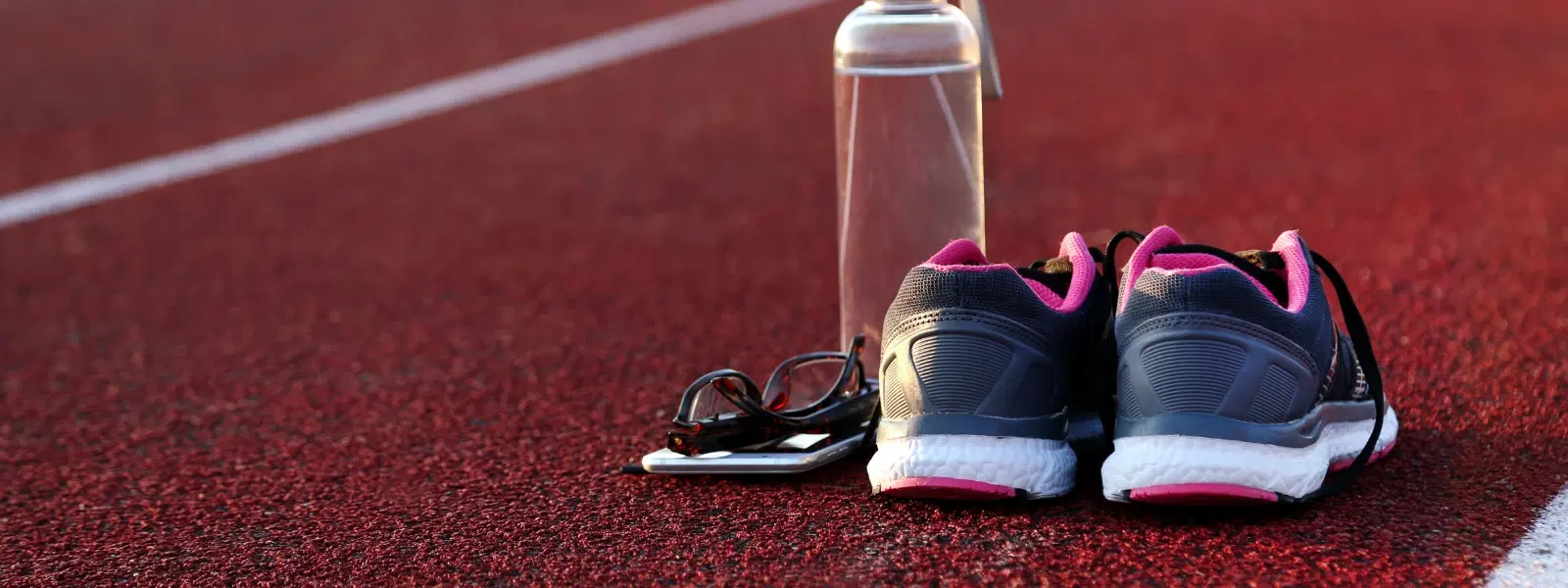
Footwear Guide
•04 min read

Choosing the right footwear for your workout is key to unlocking your best performance and ensuring maximum comfort. In this guide, we explore the unique features of gym shoes versus training sneakers. By the end, you'll clearly understand how each type of shoe caters to different workout routines — from weightlifting and cardio to high-intensity interval training.
Gym shoes are specially crafted for general fitness activities such as weightlifting, treadmill running, and low-impact cardio sessions. These shoes feature flat soles that provide remarkable stability along with reinforced uppers that stand up to the demands of repetitive lifts. Their cushioning ensures comfort during steady, controlled movements. With attributes like durability and supportive design, gym shoes are popular among fitness enthusiasts seeking performance workout shoes that boost their training gains.
Key features: flat soles for stability, robust uppers for prolonged wear, and ample cushioning for comfort.
Ideal for: well-rounded gym sessions, weightlifting routines, and stationary cardio workouts.
Training sneakers bring versatility to dynamic fitness routines. They are designed to support multidirectional movements. With lightweight materials and responsive cushioning, these sneakers enable swift transitions during agility drills, plyometrics, and high-intensity circuit workouts. If you are searching for cross-training sneakers that offer both flexibility and comfort, training sneakers might be just the right choice. Their design meets the demands of modern-day training, making them a top recommendation among those looking for comfortable workout footwear for varied exercises.
Key features: multidirectional support, lightweight construction, and dynamic cushioning.
Ideal for: HIIT sessions, functional fitness routines, and cross-training exercises.
When comparing gym shoes and training sneakers, the primary distinctions lie in performance, comfort, and durability. Gym shoes are engineered to provide stability for controlled exercises, especially those including heavy lifts and static workouts. Their structure is generally more rigid to keep your movements grounded. In contrast, training sneakers emphasize flexibility with breathable, lightweight designs that promote fluid motions and enhanced agility for dynamic workouts. This makes them popular among athletes who engage in multifaceted training sessions.
Performance: Gym shoes offer a firm base, while training sneakers enhance lateral movements with their dynamic design.
Comfort: Gym shoes tend to have a snug, secure fit for stability, whereas training sneakers use breathable mesh and responsive cushioning for long-lasting comfort even during vigorous activity.
Durability: Gym shoes are built to handle repetitive strain from heavy lifting, while training sneakers are optimized for quick, agile movements but might require more frequent updates due to wear in high-impact zones.

Identifying which shoes function best for your workout style involves a balanced look at your exercise routine and your personal comfort needs. If your schedule is dominated by weightlifting, opting for supportive gym shoes will help create a solid base and prevent injuries. However, if your routine is more dynamic, leaning towards lightweight exercise shoes and versatile training sneakers might be the better option. To find the best shoes for gym workouts, consider not just the activity type but also the shoe’s design, material quality, and support level.
Workout Style: For weightlifting or controlled movements, prioritize supportive gym shoes with flat soles. For cardio, agility, and HIIT, select cross-training sneakers that are both lightweight and flexible.
Key Factors: Comfort, durability, and support. Look for shoes with breathable designs and adequate cushioning that also offer strong arch and ankle support.
Finding the perfect pair of shoes begins with understanding what each type has to offer for your workout needs. Gym footwear recommendations often favor pairs noted for their supportive build and durability. Many fitness enthusiasts lean towards performance workout shoes that provide stability during heavy lifts and stationary cardio. Similarly, training sneakers guide users towards options that excel in agility and flexibility, crucial for dynamic workouts. Whether you need durable athletic shoes for weightlifting or cross-training sneakers for versatile workouts, keep an eye on key comfort and support features as you make your selection.
Insight Corner: Did You Know?
The sole design in your workout footwear plays a pivotal role in both performance and safety. Flat soles in gym shoes are important for lifting, offering the firm grip and stability needed to prevent injuries, while flexible soles in training sneakers help enhance traction during lateral movements. Understanding the role of the sole is essential for both gym enthusiasts and dynamic trainers.
Different training routines require different footwear. For weightlifting, gym shoes with strong, flat soles and reinforced uppers deliver the needed stability and support. When you shift your focus to HIIT or agility workouts, training sneakers come into play with their lightweight designs and flexible structures that allow for smooth, rapid movements. Whether you engage in cross-training activities or mixed routines, carefully consider the specifics of your activity and choose shoes that amplify your performance while offering comfort and longevity.
Weightlifting: Best supported by gym shoes due to their stability and supportive design.
HIIT & Agility: Training sneakers stand out with their lightweight build and agility-enhancing features.
Cross-Training: Sneakers that can transition between lifting, cardio, and dynamic movements are essential for users with diverse fitness routines.

Gym shoes are designed for stability and controlled movements, while training sneakers are built for flexibility and dynamic exercises.
Running shoes lack the necessary support and stability required for weightlifting and multidirectional movements in gym workouts.
While training sneakers can handle light weightlifting, they may not offer the flat sole stability needed for heavy lifts.
Consider your primary workout type, comfort needs, and support requirements. Gym shoes are best for stability during weightlifting, and training sneakers excel in high-impact, dynamic sessions.
Generally, gym shoes offer more durability due to their reinforced design for static exercises, while training sneakers might wear faster under intense, dynamic movements.
Understanding your workout routine is essential in choosing the right footwear, whether you lean towards gym shoes or training sneakers. Gym shoes provide a solid foundation for lifting and controlled moves, whereas training sneakers offer the agility needed for dynamic sessions. With these fitness footwear tips, you can now confidently select the ideal pair that meets your performance and comfort needs. Embrace the freedom of self-expression through your style, and let your footwear be a testament to both your identity and fitness journey.